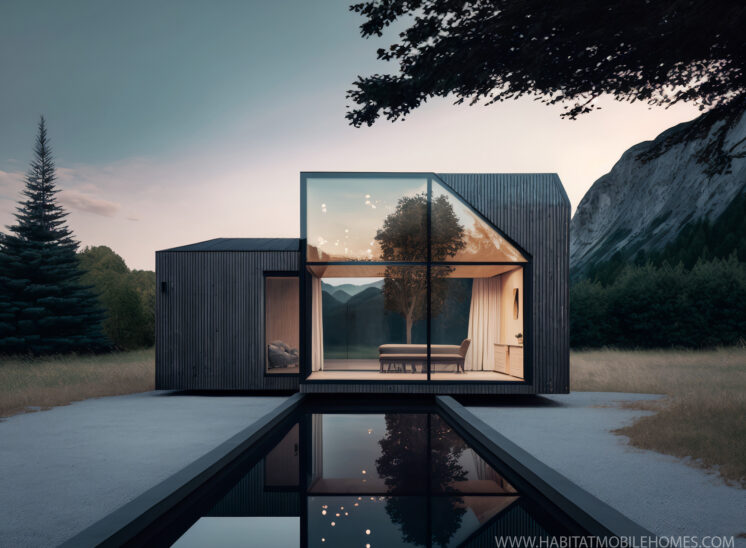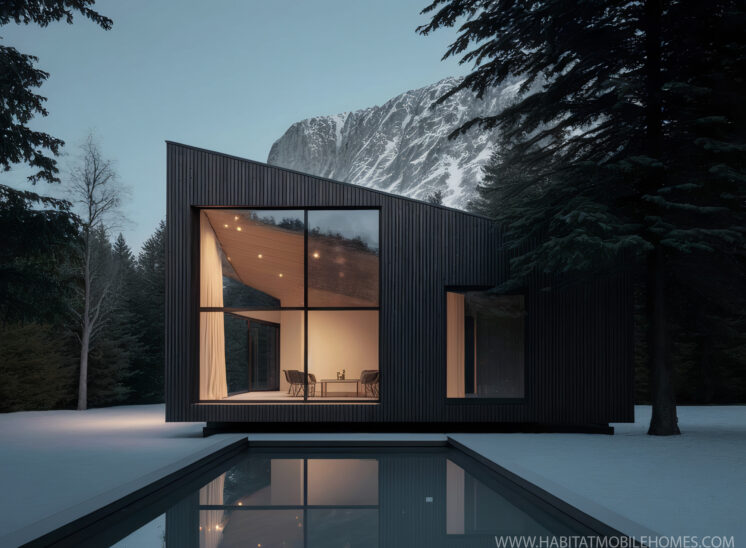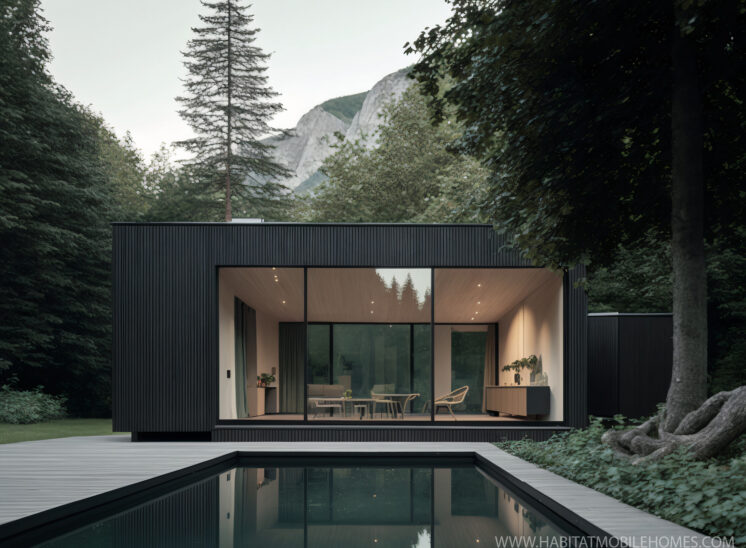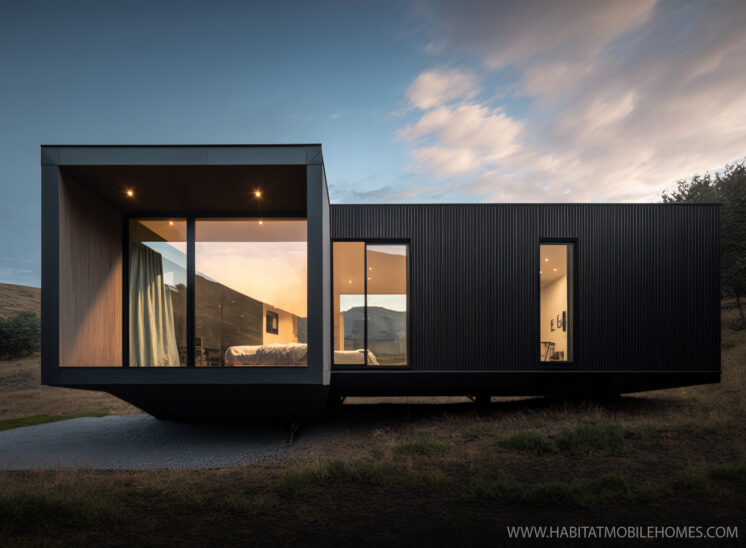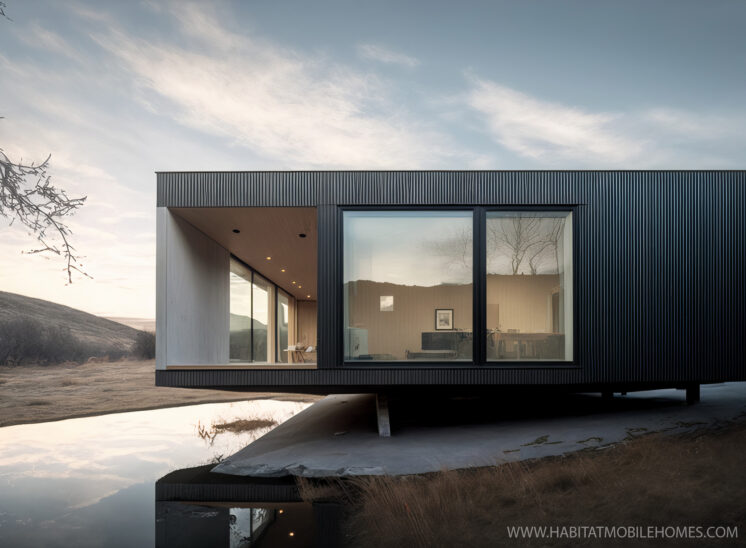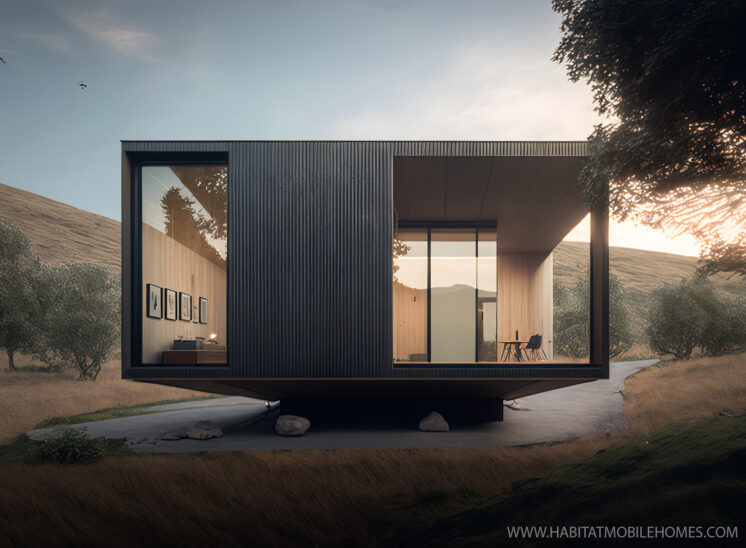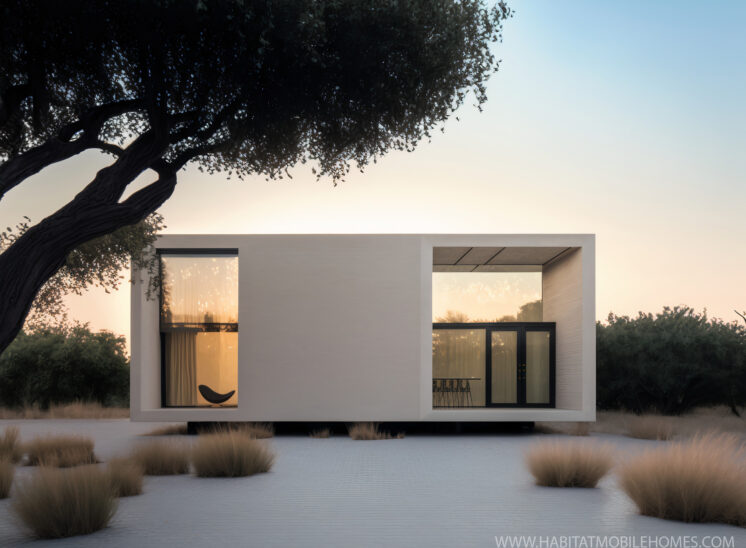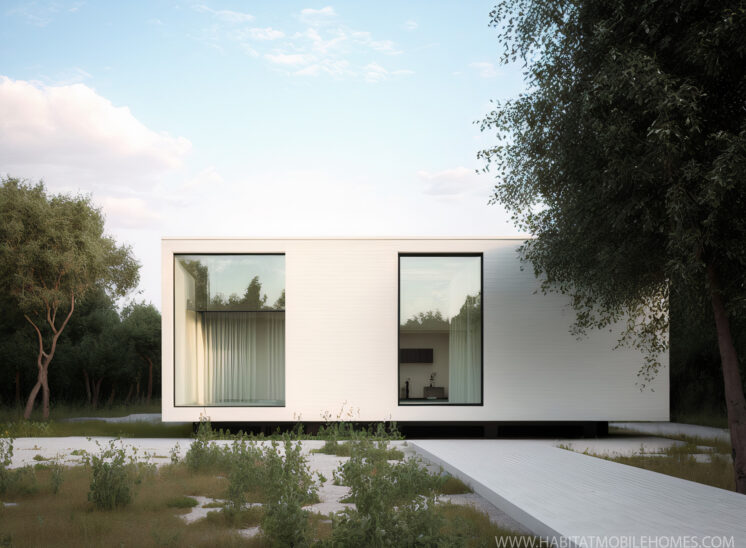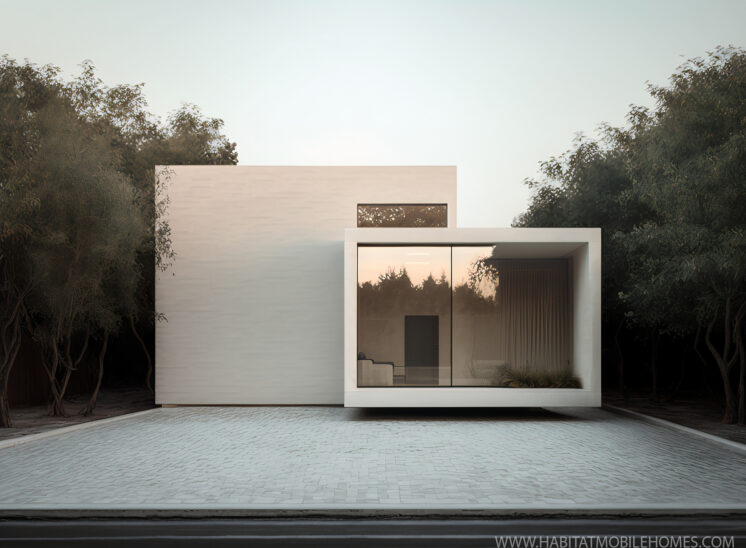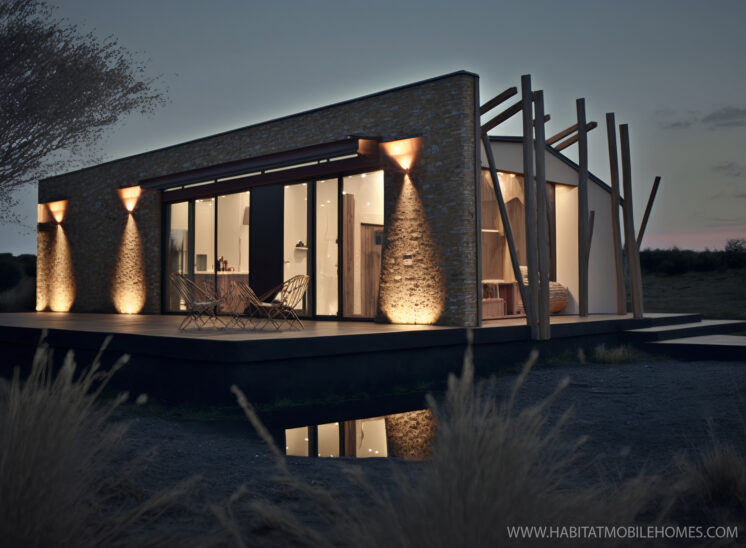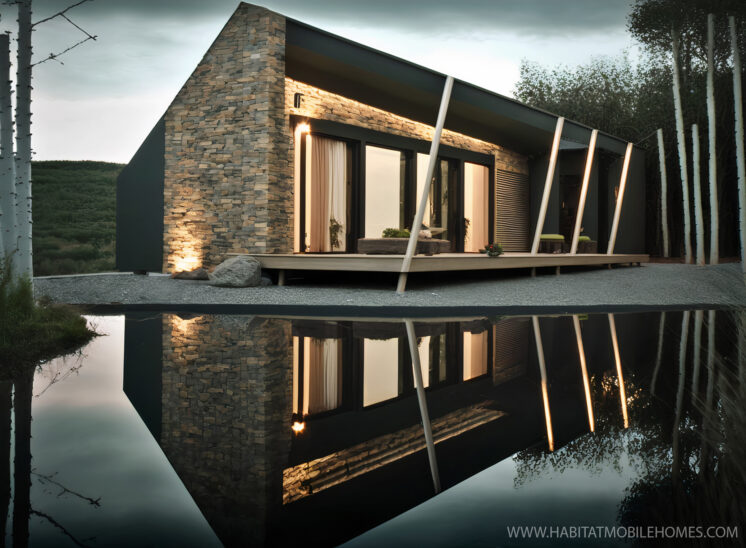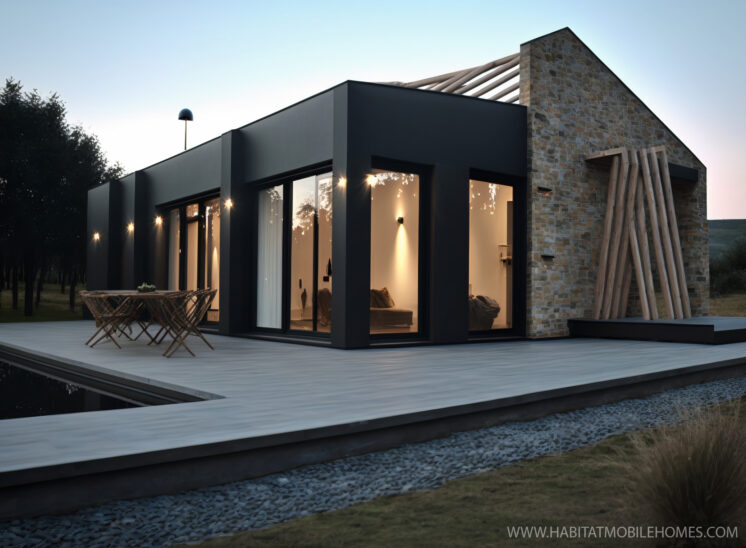Planning Free Granny Annexe – Mobile Home Planning in Gardens
Mobile Homes in Gardens Planning Guide.
A mobile home will not require planning permission based on the follow criteria:
Location
The caravan must be in the ‘curtilage’ of a dwelling house. This is the drive or garden, not adjoining paddock land, for example.
In James v Secretary of State for the Environment 1990 it was held that there are three criteria for determining whether land is within the curtilage of a building, namely:
- 1.physical layout
- 2.ownership, past and present
- 3.use or function, past and present
Definition of a ‘Caravan’
The actual structure must conform to the legal definition of a ‘caravan’ described in the Caravans Sites and Control of Development Acts 1960 and Associated Articles.
Appeal Decision by the Secretary of State (Erewash Borough Council 2002) determined that there are 3 tests to be applied to the park home:
- 1.construction test
- 2.mobility test
- 3.size test
Use
The use must be incidental to the use of the house, meaning used in conjunction with. There are 4 accepted ‘incidental’ tests, reported to the House of Commons (Hansard, for 22 November 2005) as arising from relevant case law. These are:
- 1.the relationship between the respective occupants
- 2.the relative size of the house, its garden and the caravan
- 3.the relative scale of accommodation in the caravan and the house
- 4.the degree to which the caravan is functionally connected to and subordinate to the use of the dwelling house
Overview of the Law – Caravans in Garden.
A caravan, be it a touring or static caravan or a large twin-size mobile home, is regarded as an article of movable personal property known as a ‘chattel’ and there is no public law preventing one being kept in someone’s garden, but there are Laws that regulate the ‘Use’ of land.
The siting of a caravan within the garden of a property does not require express consent provided a ‘material change of use’ has not occurred. Gardens are used for the enjoyment of the main dwelling house. If a caravan is parked in a drive or sited in a garden and used by members of the household in connection to the enjoyment of the house or as extra accommodation for visiting guests, provided the occupants continue to use the facilities of the house, then the siting of the caravan has not changed the ‘use’ of the land. However, if for example a caravan is sited in a garden and used as business premises, separately rented or used as a primary independent dwelling, with no relation to the main house, the local planning Authority could decide that an unauthorized ‘material change of use’ has occurred, for which planning permission will be required.
Mobile Homes and Caravans can be sited and used in a garden without the need for express planning consent. If the use is not considered part of, or incidental to, the house, then a ‘material change of use’ may have occurred. If the caravan is not considered to conform to the definition of a caravan then ‘building operations’ may have been carried out. In either case, planning permission will be required.
Common Questions
If I couldn’t drive a small car to my back garden, how would a massive 20 x 6 meter 5 bedroom mobile home be moved in and out?
Mobiles Homes can be assembled onsite from prefabricated panels and the mobility off-site and down a non-specific road is hypothetical.
This is best answered in ‘The Appeal Decision; Brightlingsea Haven Limited v. Morris 2008’ where it stated ‘It is the structure that must conform to the law not the means of access to where the structure actually is, and whether it may have difficulty in reaching a road.
It is now common practice to build or assemble caravans in hard to access back gardens. The structure must remain movable and capable of transport down a hypothetical road, even if access to a road may require craning over buildings or complicated procedures. The structure need not have direct access to a road to be deemed a ‘caravan’. In terms of construction, Mobile Homes can be assembled onsite from many prefabricated pieces so long as they conform to the construction and mobility test. Other caravans like touring and static caravans need not meet the construction tests but must remain movable. For large mobile homes it is recommended a kit-form caravan is purchased from a specialist reputable manufacturer as opposed to building one independently.
Why would I want to live in a Caravan? I’ve stayed in caravans at holiday parks; they look horrible and are freezing cold in the winter!
Many people think of mobile homes and static caravans as having substandard comfort, dreary designs and paper-thin walls. However, they are not all like this. Modern mobile homes can offer all the luxury of conventional residential living. They can be built to the same insulation values as a normal house and come in a variety of designs and styles.
How big can a ‘caravan’ be?
Although the maximum size of a caravan is limited to 20 x 6.8m in the Caravan Sites Acts, it is still considerably large, with enough space for over five bedrooms, toilets, kitchen and living spaces. A caravan can be significantly larger than most buildings capable of obtaining planning approval as annexes.
Why not just have outbuildings? Homeowners have rights to build outbuildings without planning permission. Why would I consider a Mobile Home?
Many homeowners are familiar with the ‘Permitted Development Right’ to have sheds and other outbuildings in a garden without the need for planning approval (The Town and Country Planning General Permitted Development Order 2008) . However, the development rights for outbuildings don’t allow living accommodation and a structure with a kitchen and bathroom is not allowed.
What’s the most common problem?
The main problem that occurs with the Local Authorities (if the boundary of the garden and compliance with the Caravans Sites Act is not in question) will be the argument that if the caravan has all the facilities for independent living it is therefor capable of being used as a separate dwelling and a separate planning unit will have been created. Consequently, the use of the land will have changed from a single dwelling or incidental to the enjoyment of the dwelling. However, this argument is not supported by Case Law. All caravans have the facilities for independent living by their very definition. There is no law that states that a caravan with full living facilities constitutes development. This applies more to buildings than caravans. One possibility to overcome this argument is to independently sign an ‘affidavit/statutory declaration’ stating that the use of the caravan will be not be as a separate dwelling.
What about farmland? Can I put a caravan in a field?
The answer is yes, but you can’t use the caravan as accommodation. It must be used in association with the use of the land. On farm land the caravan must be used for farming activities, storage or a rest area required by health and safely for workers. It cannot be used residentially as living accommodation without approval because the ‘use’ of the land would have changed from agricultural to domestic and a ‘material change of use’ would have occurred. A mobile home can, however, be used as accommodation for a limited 28 days of the year. There is no clear wording within this law that states the caravan needs to be moved off-site when not inhabited.
Should the Council be contacted?
You don’t have to contact the Council but it is recommended, especially in cases of large mobile homes. If all the circumstances are satisfied and Lawful, then you can get a letter of confirmation from the Council, either an informal reply to a letter or via an official Lawful Development Certificate, which involves completing the application documents, exampled in this book.
Why not just apply for planning permission for an annexe?
Statistically there will be a high chance of refusal. When residential annexes are granted planning permission they are frequently smaller 1-2 bedroom buildings. Mobile homes can be 20 x 6.7 metres and have over 5 bedrooms, significantly larger than a building likely to be granted conventional planning approval. Additionally there is no restriction on style. Planning permission will often require that the style and finish is ‘in keeping’ with the area. Whilst, a mobile home can be finished to your preferred taste.
Overview of the Law – Caravans in Gardens
A caravan, be it a touring or static caravan or a large twin-size mobile home, is regarded as an article of movable personal property known as a ‘chattel’ and there is no public law preventing one being kept in someone’s garden, but there are Laws that regulate the ‘Use’ of land.
The siting of a caravan within the garden of a property does not require express consent provided a ‘material change of use’ has not occurred. Gardens are used for the enjoyment of the main dwelling house. If a caravan is parked in a drive or sited in a garden and used by members of the household in connection to the enjoyment of the house or as extra accommodation for visiting guests, provided the occupants continue to use the facilities of the house, then the siting of the caravan has not changed the ‘use’ of the land. However, if for example a caravan is sited in a garden and used as business premises, separately rented or used as a primary independent dwelling, with no relation to the main house, the local planning Authority could decide that an unauthorized ‘material change of use’ has occurred, for which planning permission will be required.
Mobile Homes and Caravans can be sited and used in a garden without the need for express planning consent. If the use is not considered part of, or incidental to, the house, then a ‘material change of use’ may have occurred. If the caravan is not considered to conform to the definition of a caravan then ‘building operations’ may have been carried out. In either case, planning permission will be required.
Example Informal Letter
[Date]
[Council address]
Dear Sir
[FULL ADDRESS OF THE PROPERTY]
I am proposing to station a mobile home in the garden of my property above. A location plan is attached with the property edged red.
I understand I do not need planning permission to station a mobile home and would be grateful to receive your confirmation.
The mobile home would be stationed within the curtilage of my house.
The mobile home would be a [type of caravan proposed] which would come within the definition of a caravan in terms of its design, mobility, size and construction.
The mobile home would be placed on the land and would not be fixed to the ground.
The mobile home would be used for [an annexe by a family member(s) / additional bedrooms / guest accommodation / staff accommodation / hobbies] as an integral part of the overall use of the house as a single dwelling. It would share services, facilities and access with the house.
I believe the proposed use would not be a material change of use or would be incidental to the enjoyment of the dwelling house.
If you have any questions, please contact me. Otherwise, I look forward to receiving your confirmation.
Yours faithfully
[signature]
Question: What is required for a mobile home to not require planning permission?
Answer: A mobile home will not require planning permission if it is located in the 'curtilage' of a dwelling house (like a drive or garden), conforms to the legal definition of a 'caravan', and its use is incidental to the house.
Question: How is the 'curtilage' of a building determined?
Answer: The 'curtilage' is determined by three criteria: physical layout, ownership (past and present), and use or function (past and present).
Question: What tests must a mobile home pass to be legally defined as a 'caravan'?
Answer: A mobile home must pass the construction test, mobility test, and size test to be considered a 'caravan'.
Question: Can mobile homes be built or assembled in hard-to-access gardens?
Answer: Yes, mobile homes can be assembled onsite from prefabricated panels. The mobility of the structure is hypothetical, and it doesn’t need direct road access.
Question: Why would someone choose to live in a modern mobile home?
Answer:Modern mobile homes can offer luxury, high insulation values, and various designs and styles, contrary to the stereotypical image of substandard caravans.
Question: What is the maximum size allowed for a 'caravan'?
Answer: The maximum size of a caravan is limited to 20 x 6.8 meters, which is large enough to accommodate over five bedrooms and other living spaces.
Question: What is the main issue with local authorities regarding mobile homes in gardens?
Answer: The main issue is whether the mobile home is used as a separate dwelling, which could imply a 'material change of use' of the land.
Question: Can I put a caravan on farmland?
Answer:Yes, but it must be used in association with the land's use, such as for farming activities, and not as residential accommodation.
Question: Should I contact the Council before placing a mobile home in my garden?
Answer: It's not mandatory, but recommended, especially for large mobile homes, to confirm the legality and avoid future issues.
Question: Why not just apply for planning permission for an annexe?
Answer: Applying for an annexe often leads to restrictions on size and style, while mobile homes offer more flexibility in terms of size and personal taste.
Mobile Homes in Gardens Planning Guide: An Extensive Overview
The placement of mobile homes in gardens as annexes is a subject that combines practical convenience with legal intricacies. Understanding the criteria for when such a home requires planning permission is crucial for homeowners considering this option.
Legal Context
1. Location and Curtilage
Definition: The mobile home must be within the 'curtilage' of a dwelling house, typically encompassing the drive and garden but not adjoining lands like paddocks.
Legal Precedents: The case of James v Secretary of State for the Environment (1990) established three determining factors for curtilage: physical layout, ownership (past and present), and use or function (past and present).
2. Definition of a 'Caravan'
Statutory Definition: As per the Caravans Sites and Control of Development Acts 1960, a mobile home must conform to the legal definition of a ‘caravan’.
Criteria for Park Homes: Three tests outlined in a decision by the Secretary of State (Erewash Borough Council 2002) include the construction test, mobility test, and size test.
3. Use
Incidental Nature: The use of the caravan must be incidental to the house. This includes tests regarding the relationship between occupants, relative size and scale of the caravan and house, and the degree of functional connection to the dwelling house.
4. Overview of the Law
Chattel Status: A caravan is considered ‘chattel’ (movable personal property) and can be kept in a garden without public law restrictions, as long as there's no ‘material change of use’.
Practical Considerations
1. Movement of Large Mobile Homes
Onsite Assembly: Large mobile homes can be assembled from prefabricated panels. The Brightlingsea Haven Limited v. Morris (2008) decision clarified that the structure's conformity to law is crucial, not its access route.
2. Size Limitations
Maximum Dimensions: Under the Caravan Sites Acts, a caravan can be as large as 20 x 6.8m, providing substantial living space.
3. Comparing with Outbuildings
Permitted Development Rights: Unlike outbuildings, which have restrictions, mobile homes as ‘caravans’ offer more flexibility in terms of living accommodation.
4. Common Issues
Independent Living Facilities: A key issue is whether the caravan serves as an independent dwelling, which can change the land’s use and require planning permission.
5. Caravans on Farmland
Agricultural Use: Caravans on farmland must be used in connection with farming, not as residential accommodations, except for limited durations.
6. Contacting the Council
Recommendation: While not mandatory, contacting the council, especially for large mobile homes, is advisable for legal conformity.
7. Opting for Planning Permission
Avoiding Refusal: Mobile homes can offer more space and design freedom compared to annexes that require planning permission.
Legal References and Key Citations
1. Legislative References
Town and Country Planning Act 1990: Defines development needing planning permission, including changes in land use.
Caravan Sites and Control of Development Act 1960: Governs the use of caravans within the curtilage of a dwelling house.
2. Parliamentary and Governmental Citations
Statements from authorities like the Office of the Deputy Prime Minister offer insights into caravan use in gardens, emphasising the importance of non-independent usage.
Addressing Common Concerns
1. Legal Ambiguities
Incidental vs. Independent Use: The main legal contention is whether the caravan's use remains incidental to the main dwelling or becomes an independent unit.
2. Defining ‘Curtilage’ and ‘Incidental’
Curtilage: Includes garden, drive, and areas used for the enjoyment of the house.
Incidental Use: Refers to the caravan's usage being supplementary to the main dwelling.
3. Creating a Lawful Setting
Statutory Declarations: A declaration stating the non-independent use of the caravan can aid in legal compliance.
Hardstanding Considerations: For larger mobile homes, hardstanding might be necessary but should conform to specific planning permissions.
Navigating the complexities of placing a mobile home in a garden without planning permission requires a thorough understanding of the associated legal framework and practical considerations. Homeowners should consider the structure’s conformity to legal definitions, its usage in relation to the main dwelling, and the specific location within the property's curtilage. Consulting with local authorities and possibly seeking legal advice can ensure compliance and avoid potential legal challenges.
Habitat Mobile Homes: They have been building bespoke mobile homes for over 15 years, offering a range of luxury mobile homes and garden lodges. More information can be found on their website at Habitat Mobile Homes.
Habitat Mobile Homes: https://habitatmobilehomes.com/
Sunrise Lodges: This company offers high-quality residential mobile homes for sale off-site. They have a range of mobile homes and lodges available, which can be viewed at their showground in Essex. Visit Sunrise Lodges for more details.
Sunrise Lodges: https://sunriselodges.co.uk/
Delta Caravans: One of the largest caravan manufacturers in the UK, Delta Caravans produces a wide range of mobile homes and exports them across Europe. They pride themselves on flexibility and customer service. More information is available at Delta Caravans.
Delta Caravans (via UK Caravan Centre): https://www.ukcaravancentre.co.uk/
UK Caravan Centre: They offer a selection of Delta's mobile homes and provide a range of services including bespoke lodges, preloved mobile homes, and various accommodation solutions. Find more at UK Caravan Centre.
UK Caravan Centre: https://www.ukcaravancentre.co.uk/
Mobile-Home-Manufacturers.co.uk: This is a comprehensive directory of mobile and park home, static caravan, and log cabin manufacturers and factories in the UK. It's a useful resource for finding a variety of manufacturers. Visit their website at Mobile Home Manufacturers.
Mobile-Home-Manufacturers.co.uk: https://mobile-home-manufacturers.co.uk/

